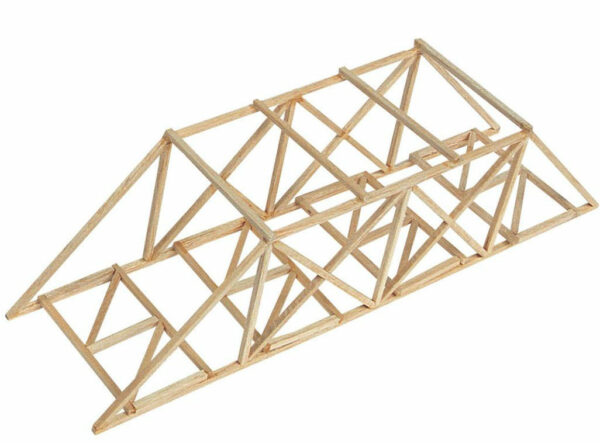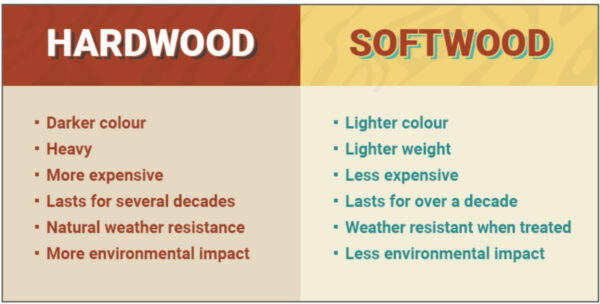Dr. Lew Feldman, Garden Director
One of the questions that students frequently ask me is what is the difference between “hard” and “soft” woods. The answer, however, is not straightforward because the terms hardwood and softwood do not necessarily relate to the density or hardness of the wood itself. Rather, the wood type depends on whether the wood is from a tree that reproduces by making cones, or from a tree that reproduces by making flowers.
Softwood generally refers to wood from conifers (cone-bearing plants), which usually remain green and do not yearly shed all their leaves. This is contrasted with hardwoods which most typically are produced by trees with flowers and which also show a marked seasonality in leaf production and in leaf shedding. Conifer wood tends to be less dense than the wood from deciduous trees, and therefore easier to cut, whereas most hardwoods tend to be more dense. But there are many exceptions, with one of the most striking being balsa wood, which is used in model building and which is produced by a flowering plant (Ochroma pyramidale, in the Malvaceae). Even though considered a hardwood, balsa wood demonstrates that there is no minimum density/hardness requirement to be a hardwood.

Model bridge made of balsa wood (Pinterest)
In general, hardwoods are considered to be more versatile than softwoods and are used in many diverse economic applications. It is suggested that the generally slower growth of hardwood trees produces a condensed, considerably more complex structure of the wood, which results in a superior level of strength and durability compared to softwoods. Hardwoods, such a beech, maple, and walnut, are usually the choice woods for furniture making, musical instruments, for wooden flooring, and for fine veneers.
While generally lacking the complex, visually appealing patterning of hardwoods, softwoods are, nevertheless, renowned for both their versatility and strength, having a wide range of applications, from furniture building and flooring to decking and many other outdoor applications. Because softwood trees grow more quickly than hardwood trees, they tend to be flexible and are often used for interior moldings to manufacture window frames and generate sheet goods such as plywood and fiberboard. About 80% of all timber products come from softwoods.
When used for outdoor applications, hardwoods are generally more resistant to decay than are softwoods. This characteristic may be associated with the usually higher lignin content (an organic compound that makes cell walls rigid). Hardwood trees fall into two distinct groups, which botanists name monocots and eudicots. Even though both groups reproduce using flowers, the term hardwood applies only to the eudicots. This is because the monocots are unable to make true wood.

From Craftoutlook.com

From Craftoutlook.com
